I was pondering one day the irony of an SAP consultant with well over a decade of SAP experience who has never himself attempted an SAP ECC 6.0 IDES installation. After doing some research, I discovered that I had what it took to actually do it myself. In this series, I will walkthrough the process of this installation from end to end.
How I’m Structuring This Series
This series will be broken out into several parts. In this first article, I’m going to walk through some of the prerequisites I needed to successfully install. I will also tackle the setup of the Virtual Machine and the installation of Windows Server 2008.
In Part 2, I will walk through the preparation of the virtualized server for the installation of Oracle and SAP. This includes OS preparations as well as a few software installations.
Part 3 will cover the installation of Oracle and SAP as well as some post-installation tasks.
Part 4 is an appendix which contains information that I found relevant and useful once your system is up-and-running.
Allow Me to Clear Up A Few Things Up Front
This is a “How I” article and not a “How To” article. Hopefully, you’ll be able to follow these same steps and be well on your way to running our own instance of SAP. But, I have no idea if this is the best or worst, most or least efficient method to use. All I know is that it appears to have worked.
Also, I am using a Virtual Machine for this installation. There are several reasons to use a VM:
- The environment within a VM is very controlled and therefore more predictable.
- A VM is, for the most part, isolated from the host system. It will be less impacted by processes and services running on the host machine which could affect server operation.
- VM’s offer quick configurability. You can increase or decrease performance as needed by changing the parameters of the VM.
- I can’t say for sure, but the VM should be more portable. I should be able to lift-n-shift the whole thing in the event that I wish to move it to a different physical computer.
Many people may find this less convenient to run it in a VM, but in my case the benefits outweigh the inconvenience. Of course, it isn’t REQUIRED to use a VM, but I think it’s the best solution for my needs.
One final Note, I am not a technical SAP guy. There are a lot of steps to this installation and I won’t be able to provide details behind each one. I will try my best to explain things along the way, but if I gloss over some things it’s a safe assumption that I haven’t the foggiest idea of what the TRUE requirement is.
SAP ECC 6.0 IDES – Prerequisites
Here is what I found I needed in order to complete the installation:
- Computer
- SAP “S Number” with Download Authorization
- SAP Software Provisioning Manager
- Oracle VirtualBox 4.3.28
- Windows Server 2008 R2 x64 with SP1
- Java SDK 7u67 for 64-bit Windows
- Time
Let’s look a little closer at each one.
Hardware
I’m running a humble, aging Dell Inspiron 530. But I’ve got it “suped up” with 8GB of Ram; a 64-bit, 3 GHz quad-core Q9650 processor; and a 3-disk RAID array offering almost 800 Gigs of storage (in addition to the 150 Gig OS partition). I can’t say whether or not a 32-bit setup is recommended or even possible.
SAP “S Number”
This is the best way to get the software you need. If you’re already an SAP Professional, you probably already have an S Number to access the SAP KB articles. You also have access to browse the SAP Software Downloads catalog. Keep in mind that you may not have access to all SAP products; this will depend on your relationship with SAP. If you are an integration consultant, you should be able to access nearly everything. However, you may need additional authorization to actually initiate a software download. Someone within your organization should be able to help you get this access, if needed.
SAP Software Provisioning Manager
You can pick up this application here. This is basically SAP’s universal installer. It replaced SAPINST, from what I read. Unfortunately, when you download this from SAP, it will be in their proprietary .SAR archive. You will need to use the SAPCAR.exe utility (included in the other packages) to extract the files. There are some additional instructions here.
Oracle VirtualBox 4.3.28
I acquired a copy of VirtualBox from the VirtualBox.org website. It’s freely available and seems to run rock-solid on my setup.
Windows Server 2008 R2 x64 with SP1
You will need some sort of OS to run on the VM. I chose Windows Server 2008 which is based on the Windows 7 OS. It’s more familiar to me as compared to Server 2012 and I know that it will have solid, predictable performance. I’m installing with an .ISO file.
Java SDK
This is a requirement for launching the Oracle and SAP installation processes. I used the following version:
jdk-7u67-windows-x64.exe (130mb)
Time
The software download alone takes about a day on a relatively slow connection. The Server OS setup and updates take forever. Unpacking the required files takes additional time as does the installation. For me, there was also a healthy learning curve as I am a functional consultant and this is my foray into SAP setup activities. I won’t even admit the number of times I attempted this process before it finally worked. If you’re new to this, I would expect the whole process to take several days and not hours. …assuming you don’t run into issues.
STEP 1: Download the SAP Software
It makes sense to start tackling this step first since it requires a bit of lead time.
-
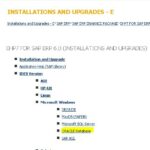
Path To SAP Downloads Log into the SAP Support website.
- Click on ‘Download Software’.
- Click on ‘Installations & Upgrades’.
- Click on ‘A-Z Alphabetical List of My Products’.
- Click on ‘E’ (for “ERP”)
- Scroll down and select ‘SAP ERP’ from the list.
- Select the ‘SAP ENHANCE PACKAGE’ option.
-
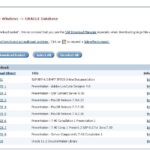
Partial List of the available files. Select your desired EHP; I chose ‘EHP7 FOR SAP ERP 6.0’.
- Select ‘IDES Version’.
- Select ‘Microsoft Windows’.
- Finally, select ‘Oracle Database’.
- Scroll down and you will see the packages associated with this Installation. You can either select ONLY the ones you want based on their description, or you can do what I did and ‘Select All’ and ‘Add To Download Basket’.
-
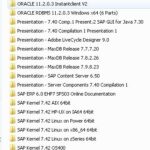
Organized Folders of Downloaded Software If you haven’t already, install the SAP Download Manager (there’s a link on the screen). You will need to make sure that the Java JRE is already installed on your system PRIOR to installing the DL Manager.
- Using the DL Manager, download the SAP packages.
I came across some inconsistencies during the installation of SAP. In short, the Oracle versions expected for
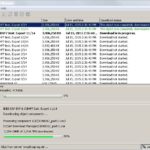
the database and client were different from what was included in the packages. To get around these issues, I also downloaded the following items:
- ORACLE RDBMS 12c (a.k.a. ‘12.1’)
- ORACLE Client 12.1
I organized all the packages into their own folders to make it easier to see what I had.
STEP 2: Setting Up Your Virtual Machine
I’m going to assume that you have an existing host machine that is already running Windows 7.
- Install VirtualBox using the installation wizard. It’s not difficult and I’m sure you can find a guide or two online if needed.
- IF YOU WANT YOUR VM TO RESIDE ON A DIFFERENT DRIVE FROM YOUR OS: In the VirtualBox settings (File –> Preferences –> General), change the Default Machine Folder to some location on your desired target drive. In my case, I chose “D:\Virtual Machines\”. Otherwise, Snapshots that you take (more on that later) will be placed on your OS partition and not your desired target drive.
-
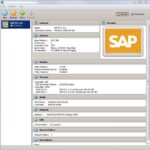
Here is what my VM Setup looks like Create a new VM with the wizard. I created one with the following attributes:
- Indicate Windows 2008 as the OS.
- Allow it to use 2 of my 4 cores.
- Allow it to use 3 of my 8 Gigs of RAM.
- 2 Dynamically sized drives:
- One for the OS sized at 60 Gigs (or more, to be safe)
- One for the SAP installation at least 500 Gigs
- Network mode: Bridged
Note: This is an optional step, but a Bridged mode can help make it easier to access this server via Remote Desktop. Details later on.
You don’t need to worry too much about disk space initially. Using the ‘Dynamic’ option for the virtual HDD’s will take up very little space at first and grow to the max sizes you specified as you need them. Also, the number of cores and amount of RAM should be adjustable in the future, so don’t worry if you setup seems slow; you can adjust it up later.
STEP 3: Install Windows Server 2008 and Required Updates
Now the fun begins.
- In the VM, map the virtual DVD drive to either (a) your physical DVD drive containing your OS disk, or (b) an .ISO file containing the OS installation image.
- Start your VM. The machine should launch the OS installation process.
- Complete the installation as you normally would:
- Select your OS “drive” (the one with ~60+ Gigs).
- Create the OS partition. I made mine ~40 Gigs. I’m praying that mine is large enough; the OS alone is taking up 21 Gigs which was a surprise.
- Install the OS on your new partition. You can create the remaining partitions later.
- Give your computer a name; I chose ‘SAPECC6’. It was between that and ‘SUPERFLY’.
- You’ll want to probably run through the ‘Windows Update’ process multiple times to make sure you are completely up-to-date. It can take hours to download and install all the updates. …and then it can take hours more once you’re rebooted and found more updates. At that point, you may want to switch off the Windows Automatic Updates process to avoid problematic updates from crippling your server.
STEP 4: Take a VirtualBox Snapshot
Please… I’m begging you… Take a Snapshot in VirtualBox. At this point in the process, you have a fresh, clean server. If your installation goes awry, it will save SO much time to be able to come back to this exact point, and that is exactly what a VirtualBox Snapshot does. It creates a sort of Restore Point which will make an exact copy of your server — bit for bit — and allow you to return to this point if you need to start all over. I learned this lesson the hard way.
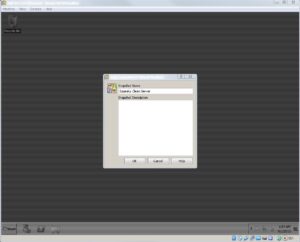
To take a Snapshot:
- With the machine still running, select the Machine –> Take a Snapshot menu option.
- Give the Snapshot a name, such as Squeaky Clean Server.
- Click Save.
- Give yourself a pat on the back; you’ve just saved yourself a headache (or two).
Part 1 Wrap-up
Phew… That was a lot of work and there’s not too much to show for it. But, on the bright side, you now have a great foundation for your SAP ECC 6.0 IDES installation. So far, we’ve discussed all the components needed to install SAP, we’ve downloaded the required software and created a Virtual Machine where our SAP ECC 6.0 IDES installation will live. In the next part, we will continue refining our VM and complete the preparation for the installation of Oracle and SAP.
Ready? Continue on to Part 2…


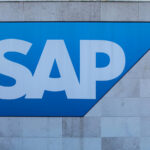



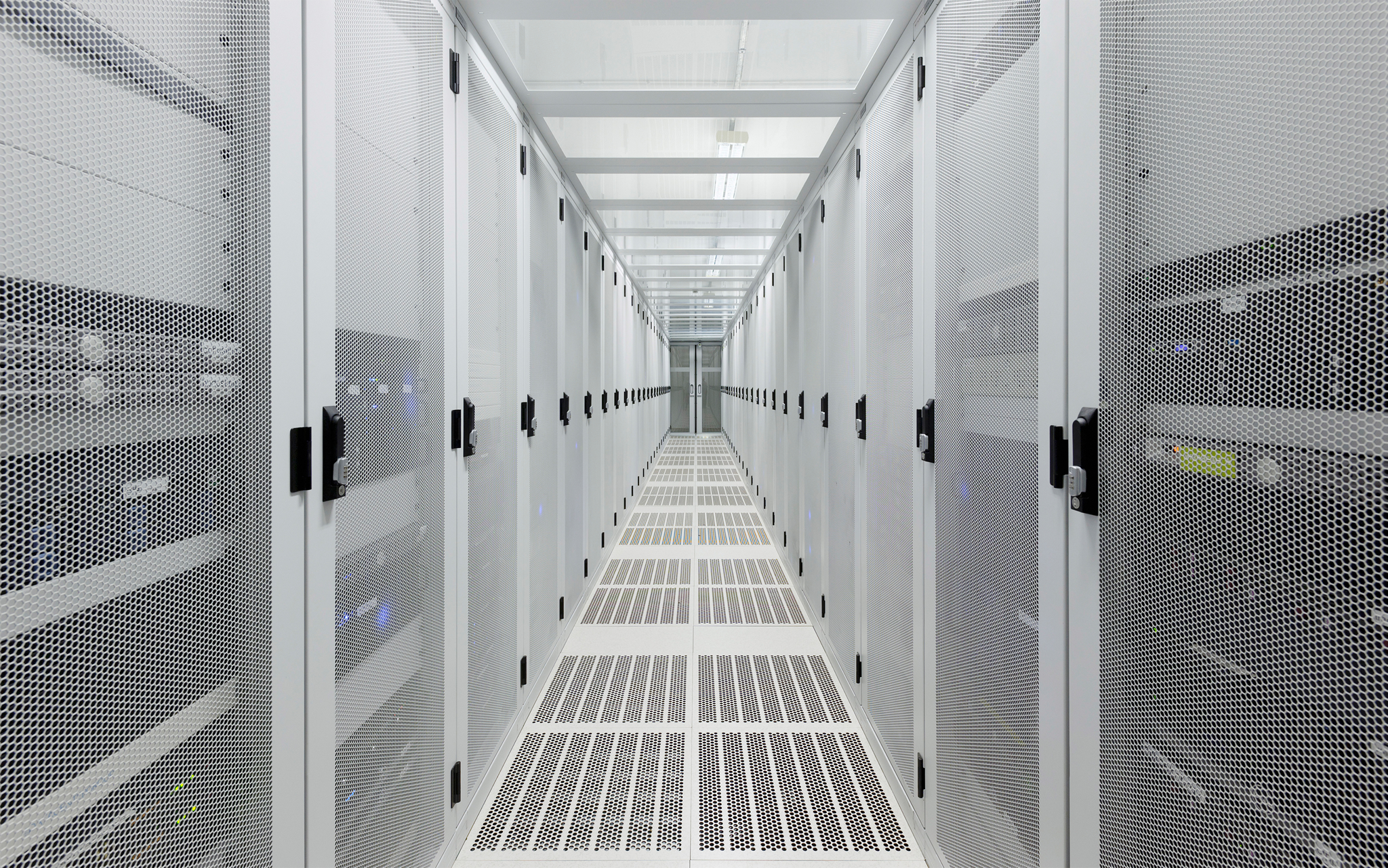



Hi Michael,
Thanks for detailed article on IDES installation. I downloaded everything Software provisioning Manager from SAP Market place and SAPCAR.EXE utility. But I am not able to extract the files. Could you please let me know how to use this tool and extract the SWPM. Your help is highly appreicated.
Regards,
Sree
You’ll find a link in the “SAP Software Provisioning Manager” section above which will give you a ton of info on SAPCAR. In Windows, you’ll need to open up a command prompt and navigate to where you .SAR/.CAR file is located. Then you’ll want to input the following command:
SAPCAR -xvf
It will extract your file to the current folder (I think), so you may want to put everything in a separate folder. Does this help?
Hi Michael, thanks for helping me. I extracted the files and started installation. But struggling with error. SQL Statement or Script failed. Diagnosis Error message: ORA 00401. the value for parameter is not supported for this release.
Log files are written to C:\program files
I am not sure where to change the parameter for this. Any suggestions for this.
Regards,
Sree
Did you do Step 17 in Part 3?
Yes I changed the parameter for oracle. its working fine, But this is another error about SQL statements.
I don’t recall running into that issue. You’ll probably have to Google for a solution. Try looking through the SAP Notes that I recommended for the Oracle parameters; there may be some help in there. Please post back with what you find.
Hello, can you help me?
I can’t find ORACLE RDBMS 12c (a.k.a. ‘12.1’) and ORACLE Client 12.1, i don’t have Oracle Database?!
My list in SAP Market Place is:
EHP7 FOR SAP ERP 6.0 (INSTALLATIONS AND UPGRADES)
Installation and Upgrade
Application Help (SAP Library)
IDES Version
AIX
HP-UX
Linux
Microsoft Windows
MaxDB (SAPDB)
Microsoft SQL-Server
SAP ASE
SAP HANA
Solaris
Biasi,
Thanks for reading my article. You can find easier access to the Oracle software using the following path on support.sap.com:
Download Software –> Databases (under the ‘Software Downloads’ section) –> Oracle –> Oracle 12.1 Software (64-bit) –> Installation –> Microsoft Windows –> ORACLE Database
You should find both server and client software. If you do not have these options, it’s possible that your account is limited to only certain categories of software; I won’t be able to help if that’s the case.
Let me know if this helps you.
Michael
Hi Michel,
I am Prasad, thanks for giving your valuable suggestions, kindly let me know how to download procedure for SAP ecc 6.0, it is asking username & password for authentication, step 4 in Market place. kindly provide me access for username & password.
Regards,
Prasad.
Prasad, do you have an SAP “S Number” as mentioned in the prerequisites?
Hi Michael,
Thanks for your article. Very useful information and clear procedures. I have downoaded the files from SMP, but extracting the Export files give me an error “Some of the files might be corrupt”.
Any idea what to do in this situation?
Thanks.
Haisam,
Unfortunately, I do not recall receiving that error. What type of archive were you opening and what method were you using to do so?
Michael
Hi Michael,
thanks for your reply. I had to download the files again from SMP. I believe there must have been an issue with the download, as the size of the files was much smaller. Did not have any errors extracting them now.
Once again thanks for this excellent article.
Glad that you are back on your way! Thanks for commenting!
Hi Michael.. Thanks for this article. I am trying to download the SAP IDEAS but as per your article, it is not showing Oracle Database under Windows option. Only SQLServer, HANA, SAP ASE is being displayed.
I followed all steps exactly.
I just logged in and see it under Installations and Upgrades -> SAP ERP 6.0 -> IDES Version -> MS Windows -> Oracle.
I am also seeing it under the Enhance Package sub-tree for EhP 7, however, I am not seeing an IDES Version under EhP 8.
Dear ,
I can’t able to register Sap market place pls help
I need to download ides version
Otherwise can you send me username & password for sap market place
Nope. Sorry. I can’t help you with that. There are two ways that I know of to get an SAP S-number: through your employer, or by completing an official SAP Certification.
Hai Michael,
I am trying to download SAP ERP \ ENHANCE PACKAGE \ EHP7 FOR SAP ERP 6.0\ IDES VERSION. But there I can found plenty of files. Please guide me that what are the following files required to download. I am using windows 2012 server 64bit, 12GB ram, 1TB HDD, required MAXDB 7.9.29 or more.
Regards,
Gopinath G
Hello Gopinath,
There’s a screenshot in this article which shows the specific files that I downloaded. As you know, I used Oracle and not MaxDB, so the files I used are going to be different. Also, I’d wager that these files change periodically as the links expire, so file names may differ. I did not need all the files I downloaded (and I needed some additional ones that WEREN’T in the original list). I would recommend getting everything for MaxDB if possible.
Michael
Hi Michael,
You mention about 32 & 64 bit. Are you talking about the OS or CPU?
Also, can you confirm if the installation can work with 32 bit OS or 32 CPU? Thank you for sharing.
In my case, I am using a 64-bit processor with a 64-bit OS. That was simply what I had available to me. When I mention 32-bit, I am basically just saying that I am unsure about the system requirements for running SAP ECC 6.0. I hope this clarifies.
Thanks MIchael for the prompt reply.
I have been trying to download the required files from SAP Marketplace.
It seems to be taking ages. Do you know of any alternative?
Hi Michael, can ask you a private question, pls send me your contact details.
Best Regards
Sonja,
LinkedIn is the best way to reach me privately. There’s a link at the top of the page to view my profile.
Thanks,
Michael
Hi michael,
Can u please help me..Am installing sap ides EHP7 ERP 6.0 with sybase database.In that am getting error like “assertion failed:installer is started with enabled database environment variables” what should i do pls tel me
Ramakrishna, Thanks for posting a comment. I would check the environmental variables used in the settings file (forgot the name of it) and check the values that you’re using. If you read my articles, you’ll find several variable changes that I made along the way. -Michael
Hi Michael,
Good Day, I’am getting errors at Import ABAP. All Import monitor jobs are getting falied.Can you please suggest me what should I do.
Thanks,
Jainender Jain
Jainender, thanks for your comment. Unfortunately, I don’t have all the answers to issues. Any issues that I encountered are documented in the articles. I would pay close attention to the specific errors you’re receiving and use Google to help find answers. -Michael
Thank you,
I got an error that import monitor failed.
Solution was to increase the shared pool size of the db to 128 MB
Thank you so much Mr. Michael. Its really very useful . Keep it up.
Help me please …
Dec 10, 2018 2:05:03 PM com.sap.sdt.gui.core.swing.controls.GuiMessageBox
INFO: messagebox 2137765244 (null): setMessageText() text= An error occurred while processing option SAP Business Suite 7i 2013 Support Release 2 > EHP7 for SAP ERP 6.0 ABAP Support Release 2 > Oracle > SAP Systems > Application Server ABAP > Standard System > Standard System( Last error reported by the step: SQL statement or script failed. DIAGNOSIS: Error message: ORA-00401: the value for parameter compatible is not supported by this release
Desconectado
. SOLUTION: For more information, see ora_sql_results.log and the Oracle documentation.). You can now: Choose Retryto repeat the current step. Choose Log Filesto get more information about the error. Stop the option and continue later. Log files are written to C:/Program Files/sapinst_instdir/BS2013SR2/ERP607SR2/ORA/INSTALL/STD/ABAP.
Dec 10, 2018 2:05:03 PM com.sap.sdt.gui.core.swing.controls.GuiMessageBox
Did you read the log file referenced in your message: “see ora_sql_results.log and the Oracle documentation.” If so, did you Google the specific errors therein? I won’t be able to help you; you must help yourself first.
Hi Michael,
Thanks a lot for sharing this. Do you have any hints what Linus distribution to use instead of Windows Server and how to configure it?
Cheers,
Thomas
Thanks for commenting, Thomas. Unfortunately, no, I have no idea how to approach this for Linux. I chose Windows since that’s the most familiar OS for me.
Hello Greetings.
Thanks for bringing this resourceful portal to us.
I want to learn and practice FICO on my personal computer having i7 processor, 1 TB SSD & 16 GB DDR3 RAM.
I would be very grateful to you if you can share installation files in whatever convenient way.
Thanking you in anticipation.
Hello. It sounds like your rig should handle the implementation. I’ve provided as much information as I can for which files I used in the process; I’m certain they’re outdated by now. I don’t keep those files on my PC due to their size. You’ll need an S-number from SAP to get the latest versions. Best of luck!
While selecting EHP7 for Microsoft Windows and the db Oracle database i dont see any packages for oracle.
Hi, Have you tried converting your ECC IDES to S4HANA?I have built my ehp4 back in 2010 (vmware) and now I am contemplating on building an ehp8 ides and converting that to s4hana.
Thanks,
Rom
No, I have not tried to upgrade my IDES installation. My understanding is that I would need a whole new (more expensive) hardware setup for the in-memory database. I’m curious to know if you’re aware of how to do this cost effectively.
Hi Michael,
I have installed the s4hana 1610 more than a year ago using suse linux (temp license). My hardware is not really that expensive. I chanced upon a local blade server seller where I got my 256GB ram and from nearby Calgary, I bought a secondhand HPz820 (seller is https://www.ebay.ca/usr/calgarycomputerwholesale?ul_noapp=true) and extra CPU fan. The max memory of z820 is 512 GB so some room for future s4hana versions. The V2 cpus I got from craigslist. The HDrives are used ones that I got from ebay. The 6 drives (mix of sas and sata) are all working except one has errors. The mouse and keyboard were free from a friend and have a spare monitor. There is actually a hardware check bypass command(gaming) in linux that I got from net as my whole setup is not a certified appliance. Total hardware cost would be less than $700. I do have issues running into upgrade of my licensed ehp4 as it is still in server 2003. Back in 2010, I couldnt find anyone building a vmware ehp and i was lucky to be successful using an HP proliant server that I got 2nd hand from a gaming company in vancouver. I needed my new setups (ehp8 and s4hana) for an internal project that was shelved for another year. It was difficult for me learning linux quickly and difficult to start over again. Hence, I will try again to build an ehp8 ides and find a way to get the 9999 year in tcode slicense then figure the next steps for the s4 1909 if project gains momentum.
That’s amazing info, Rom. $700 is definitely tempting. Is there a guide that you are referring to while doing this? Or are you a hardware type of guy? I lean heavily toward the functional side and would hate to drop hundreds of dollars and end up short of the mark.
I remember during that time i was first building ides I couldn’t find a google search for vmware and sap in 2010. Hardware was easy to get then as desktops and laptops were doable as ehp servers. Im a functional consultant and implemented 7 different modules. There is a link on the certified hana appliances in the support site. That gave me the idea on what to build. I know I needed a high ram capacity setup so that guided me on what is available in my cheap budget range. I could have had a setup got under $500 if i had not took time in verfying a local hp z820. I got lucky with the ram as those are expensive if bought off ebay. My guides are just the HP site on what components could go in for a particular server. My other choices where ibm, dell and apple.
Hi Michael,
What a great article!.
Anyway
How to exposed local SAP IDES to the internet? ( other than using remote desktop tool )
I have tried using ngrok but still failed to do it.
Do you have any experiences or ideas on how to share local IDES online ?
I am using vmware player 17 and ECC EHP 8
Thanks a lot
Unfortunately, this isn’t a strength area for me. I never exposed my IDES to the internet. Sorry!
you can delete this text because SAP pages are completely different now and nobody can download the files you provided.